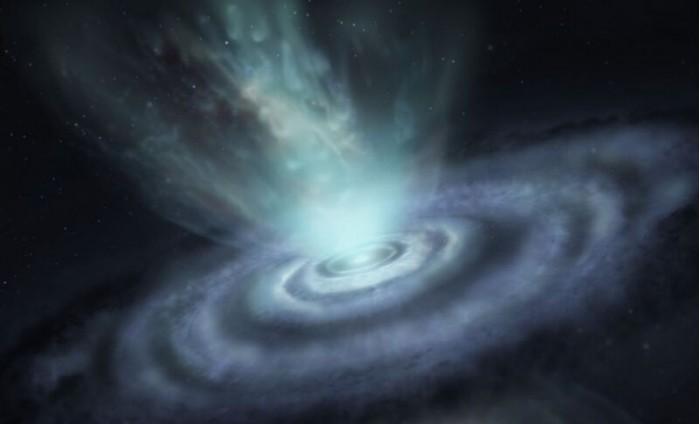Source: cnBeta
Astronomers captured a red giant star experiencing its final throes of death in unprecedented detail, revealing an unusual feature. According to a preprint paper accepted by the Astrophysical Journal, the star, known as V Hydrae or V Hya, spewed out six different rings of matter. The specific mechanism by which these mysterious "smoke rings" are formed is unclear. Still, this observation has the potential to shake up current models of the late stages of this particular stellar evolution and further reveal the fate of our own sun.
The researchers say V Hydrae has been in the process of shedding its atmosphere, eventually shedding most of its mass, which is what most late red giants do. However, this is the first and only time a series of expanding rings have been seen around a star on the edge of death. The researchers calculated a series of inflated smoke rings that were blown up every few hundred years.

Red giants are one of the final stages of stellar evolution. Once a star's core stops converting hydrogen into helium through nuclear fusion, gravity begins to compress the star, raising its internal temperature. This process ignites a shell of hydrogen burning around the inert core. Eventually, the compression and heating of the core caused the star to expand dramatically, reaching a diameter of 62 million to 620 million miles (100 million to 1 billion kilometers). By the standards of stars, their surface temperatures are relatively low, at only 4,000 to 5,800 degrees Fahrenheit (2,200 to 3,200 degrees Celsius). So these stars take on an orange-red appearance, hence the name red giant.
Eventually, the helium in the red giant's core will be depleted and the core will contract again. The star then becomes an asymptotic giant (AGB) star (the final red giant stage). The internal structure of AGB stars consists of a central core made up of carbon and oxygen, a shell in which nuclear fusion turns helium into carbon, and another that turns hydrogen into helium. These stars typically produce dramatic pulses of increased brightness every 100 to 1,000 days. In addition, strong surface winds form a gaseous cloud around the star called a ring envelope.
These intense stellar winds will eventually expel the atmosphere and stellar envelope, and the star will become a white dwarf in a planetary nebula. The faster an AGB star loses its mass, the closer it is to a final transition. Our Sun will eventually become a red giant in about 5 billion years, eventually progressing to AGB, and then eventually evolving into a gliding nebula centered on a white dwarf.
This is the process that astronomers have understood for years. However, the unusual features of V Hydrae made them rethink the problem. Located in the constellation Hydra 1300 light-years away, V Hydrae is a carbon-rich star, meaning it has more carbon in its atmosphere than oxygen. In terms of its mass, its loss rate is high, so astronomers speculate that it may be shedding its atmosphere into a planetary nebula.
This AGB star is also intriguing because every 8 years or so, there will be large-scale plasma eruptions, and about every 17 years there will be a sharp decrease in brightness. These events suggest the presence of a nearly invisible companion star, and the decrease in brightness may have been caused by clouds associated with this second star passing in front of V Hya.
The latest study combines data from the Hubble Space Telescope with observations from the Atacama Large Millimeter/Submillimeter Array (ALMA), combining infrared, optical and ultraviolet data to capture V Hya's journey to death at multiple wavelengths. The star is far away and surrounded by dense dust, but ALMA's higher resolution reveals huge details of its rings and outflow.
The star is shedding its atmosphere by blowing out a series of smoke rings that have expanded outward over the past 2100 years or so, forming a dusty disk-like region around V Hydrae. The team called this structure DUDE (a disk undergoing dynamic expansion).
Their observations also showed a high-velocity gas explosion discharged from the star, which was opposite in the direction and perpendicular to the smoke ring, forming two hourglass-like structures. These structures are rapidly expanding at more than 500,000 mph (240 km/s). Discovering that this process may involve the ejection of rings of gas while producing high-speed, intermittent jets of material, brings us a new and fascinating insight into how stars end their lives.